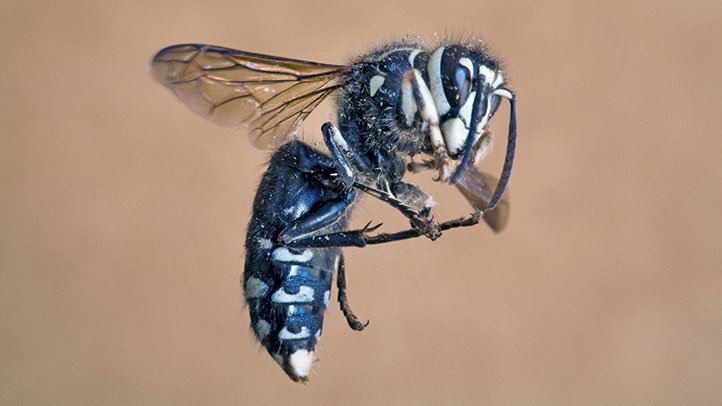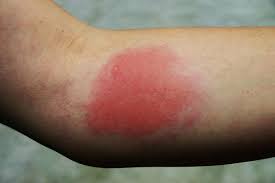What Are The Effects Of Stings Of Wasps
There are roughly 20,000 species of wasps, but not all of them sting humans. As with bees, only female wasps have stingers. And unlike honeybees, wasps don’t lose their stingers. This means it’s possible to be stung multiple times by the same wasp.
Four common types of stinging wasps include:
Hornet
Bald-faced hornets are black and white and about three-quarters of an inch long. They are known to be especially aggressive in protecting their distinctive roundish papery nests, which often hang from trees. The European hornet is bigger, measuring closer to 1 inch long. (1) You can identify the European hornet by its reddish-brown head and legs and yellow-and-black striped abdomen (rear end). They nest in the ground, in the hollows of trees, and in spaces inside inside walls. (1) They’re found in Asia, Europe, Africa, and North America. (4)
Yellow Jacket
Host an outdoor barbecue and you’ll likely have a few of these unwanted visitors. Yellow jackets are sometimes confused with hornets and bees, but you can easily identify them by their black-and-yellow-striped abdomen and short legs. These wasps are extremely aggressive and sting more often than other types of wasps. Yellow jackets are active from the spring through late summer, and you can find them around the globe. If you live in the southeastern United States, you may see them in large numbers.
Paper Wasp
You’ll find these wasps throughout the U.S., usually flying around structures. Paper wasps are about a half inch to 1 inch long and identified by their reddish-brown to black body and long legs that hang down when they fly.Some paper wasps have yellow rings around their abdomen, making them resemble a yellow jacket. All paper wasps are active during the spring, summer, and fall.
Cicada Killer Wasp
This is one of the largest species of wasp in North America — growing up to 1½ inches — and they’re found throughout the U.S. You can distinguish these from other wasps by their mostly black abdomen with whitish markings. Cicada killer wasps feed on cicadas, another fairly large insect. They rarely sting humans, but will if they feel threatened.

Symptoms of a wasp sting
The majority of people without sting allergies will show only minor symptoms during and after a wasp sting. The initial sensations can include sharp pain or burning at the sting site. Redness, swelling, and itching can occur as well.
Normal local reactions
You’re likely to develop a raised welt around the sting site. A tiny white mark may be visible in the middle of the welt where the stinger punctured your skin. Usually, the pain and swelling recedes within several hours of being stung.
Large local reactions
“Large local reactions” is a term used to describe more pronounced symptoms associated with a wasp or bee sting. People who have large local reactions may be allergic to wasp stings, but they don’t experience life-threatening symptoms, such as anaphylactic shock. Large local reactions to wasp stings include extreme redness and swelling that increases for two or three days after the sting. Nausea and vomiting can also occur. Find out what’s happening in your body during an allergic reaction.
Most of the time, large local reactions subside on their own over the course of a week or so.

Home remedies
First aid for someone who has been stung by a bee or wasp includes a number of dos and don’ts.
Do:
- Stay with the person to watch out for any severe reaction that could develop.
- Call for urgent medical help if there are signs of an allergic reaction.
- Remove the stinger promptly if it remains. Honey bee stingers usually stay in the skin, continuing to inject venom.
- To remove the stinger, wipe over it with a piece of gauze, or scrape a finger nail, piece of card, or a bank card over it.
- Remain calm and walk away, as wasps and hornets can sting again. They do not usually leave a stinger.
- Wash the site of the sting with plain soap and water.
- Apply a cold compress, for example, ice wrapped in a cloth, frozen peas, or a cold cloth to reduce swelling.
Don’t:
- Squeeze the stinger or use tweezers in an attempt to remove it, as this can cause more venom to be injected.
- Scratch the sting, as this could aggravate the problem and lead to an infection.
- Use calamine lotion, vinegar, or bicarbonate of soda. They will not neutralize the venom because it will be deep within the tissues.
- Burst any blisters that develop, since this can lead to infection.

How can I prevent a bee or wasp sting?
You can take preventive measures to decrease your chance of being stung by an insect. Effective prevention tips include the following:
- Avoid, and do not disturb, hives and nests
- When participating in outdoor activities, avoid fragranced body products, bright colors, and sugary drinks
- Wear long sleeves and long pants outdoors
- Do not walk barefoot outdoors
- Do not swat at swarming bees or wasps
- Exercise caution around fruit trees and blooming flowers
- Keep garbage away from outdoor activity areas
Handling Bee and Wasp Stings
- A bee will usually leave behind a stinger attached to a venom sac. Try to remove it as quickly as possible using a scraping motion, without pinching the venom sac at the end. (Wasps don’t leave their stingers in the skin after stinging, which means they can sting more than once.)
- Wash the area carefully with soap and water. Do this two to three times a day until the skin is healed.
- Apply an ice pack wrapped in a cloth or a cold, wet washcloth for a few minutes.
- Give acetaminophen or ibuprofen for pain.
- For pain and itching, give an over-the-counter oral antihistamine if your child’s health care provider says it’s OK; follow dosage instructions for your child’s age and weight. You could also apply a corticosteroid cream or calamine lotion to the sting area.
- A sting anywhere in the mouth needs immediate medical attention because this can quickly cause severe swelling that may block airways.
- Get medical care if you notice a large skin rash or swelling around the sting site, or if swelling or pain lasts for more than 3 days, which could be signs of an infection.
- The following signs may indicate a serious or potentially life-threatening allergic reaction. Use an epinephrine auto-injector if it’s available, and call 911 right away if you notice:
- wheezing or trouble breathing
- tightness in throat or chest
- swelling of the lips, tongue, or face
- dizziness or fainting
- nausea or vomiting